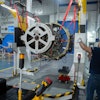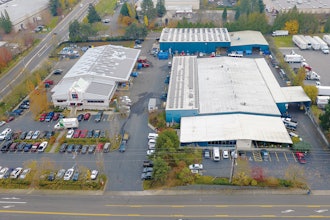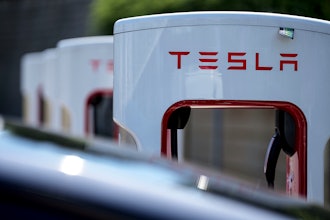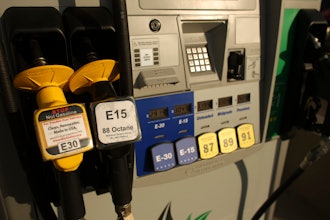CHEYENNE, Wyo. (AP) — Carbon County officials say they're optimistic that a Texas company will follow through on plans to construct a plant to turn coal into gasoline by 2016.
"For the most part, most people are very positive about it, as we need jobs and tax money," Carbon County Commission Chairman Terry Weickum said Wednesday.
The Carbon County Commission early this year passed resolutions in support of issuing bonds to help finance the plant, slated to be built at Medicine Bow, a town about 100 miles west of Cheyenne.
Robert Kelly, chairman of DKRW Advanced Fuels of Houston, announced last week that his firm has contracted with China-based Sinopec Engineering Group to build the plant. Plans call for processing coal mined underground at the site into gasoline, which mainly would be piped to the Denver market.
Kelly said Wednesday he expects to line up bank financing for the project by the end of the year but could ask the state of Wyoming to invest if necessary.
DKRW had asked the state of Wyoming last year to purchase up to $300 million in industrial revenue bonds to help finance the $2 billion project. The Wyoming Business Council responded that it would require the Idaho National Laboratory to review the company's plan before recommending any state investment.
While coal-to-liquids plants have been built elsewhere in the world, Kelly has said his project would be a natural for Wyoming, the nation's leading coal producing state.
"Where do you want to get your oil from? Where do you want to get your gas from?" Kelly asked state lawmakers earlier this year. "Do you want to get it from Iran? Do you want to get it from Venezuela, or do you want to get it from Wyoming?"
Kelly also has emphasized that coal-to-liquids technology can produce high-value products in an environmentally responsible way. "It can add substantial value to the coal business, and that's why I think it should be done," he said earlier this year.
Kelly said Wednesday his firm is working now to line up more than $1 billion in commercial bank funding. "We need to line that up first, and then make a decision on whether we need to pursue the other options, which include the tax exempt bonds and the industrial development bonds," Kelly said.
Kelly said some work has already occurred at the site. He said he expects work will begin in earnest this winter once the financing comes through. Construction of the plant and associated coal mine could create 2,300 construction jobs and the facility would employ 400 people fulltime once it's in full operation by 2016, he said.
Jerry Paxton, vice chairman of the Carbon County Commission, said Wednesday that the region would welcome the jobs and revenues.
"I would say that we're cautiously optimistic," Paxton said. "It certainly would be a real benefit to our county when you look at the number of jobs that would be created during the construction phases, and the number of permanent jobs to operate the plant.
Paxton said he hasn't heard many local people express environmental concerns about the plant and Wyoming environmentalists have failed to get much traction in seeking to challenge it.
The Wyoming Supreme Court last year rejected a challenge from the Sierra Club, which had argued for more stringent emission controls. The Wyoming State Engineer's Office already has signed off on allowing the mine operation to use billions of gallons of groundwater for dust suppression and other purposes.
Jay Lillegraven of Laramie, a retired professor of geology and other subjects at The University of Wyoming, has been a vocal critic of the plant. He said Wednesday that he's been working for years developing a series of geologic maps of the area, including the DKRW site.
Lillegraven said Wednesday he sees a range of problems with the project. He said he believes that underground faults in the area could make mining dangerous and said pumping so much water could draw down the water table, harming cattle operations and wildlife in the area.






















